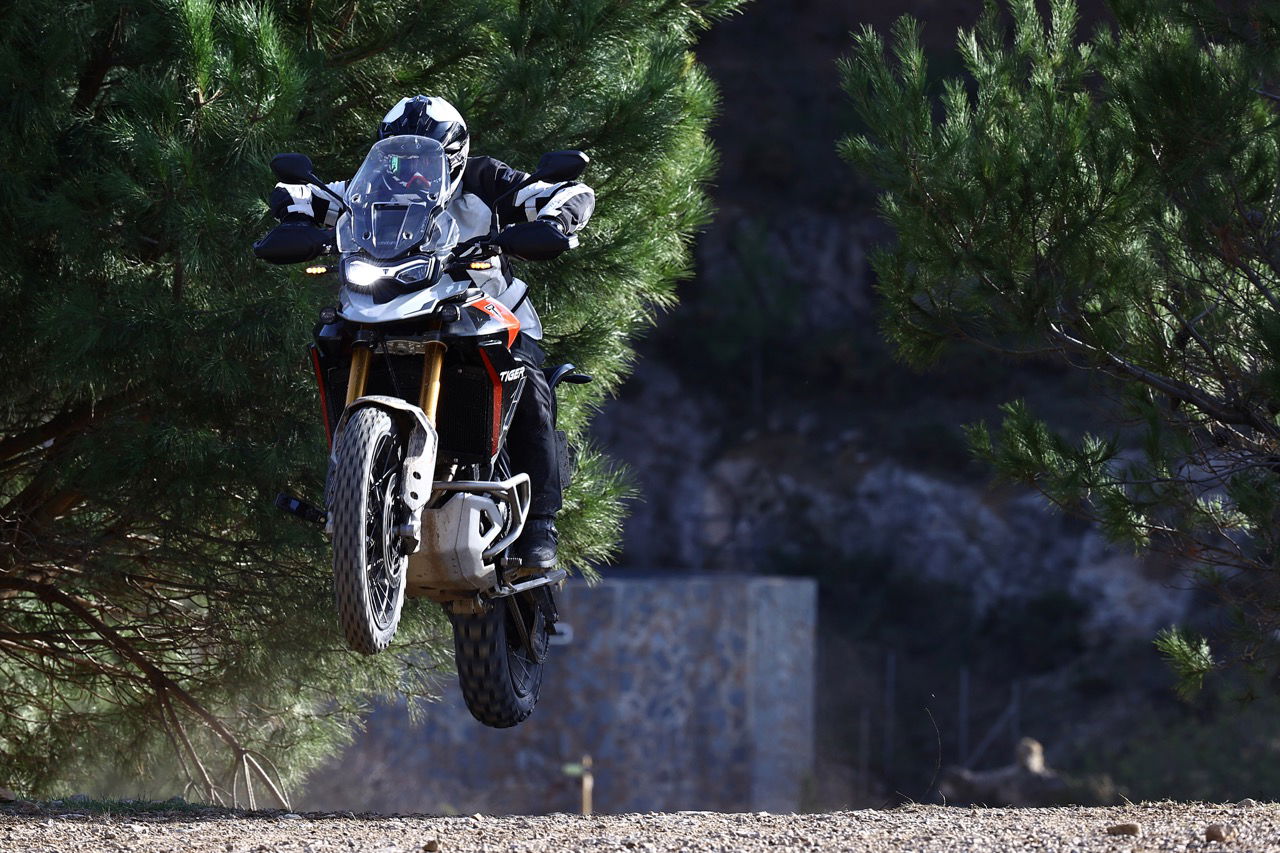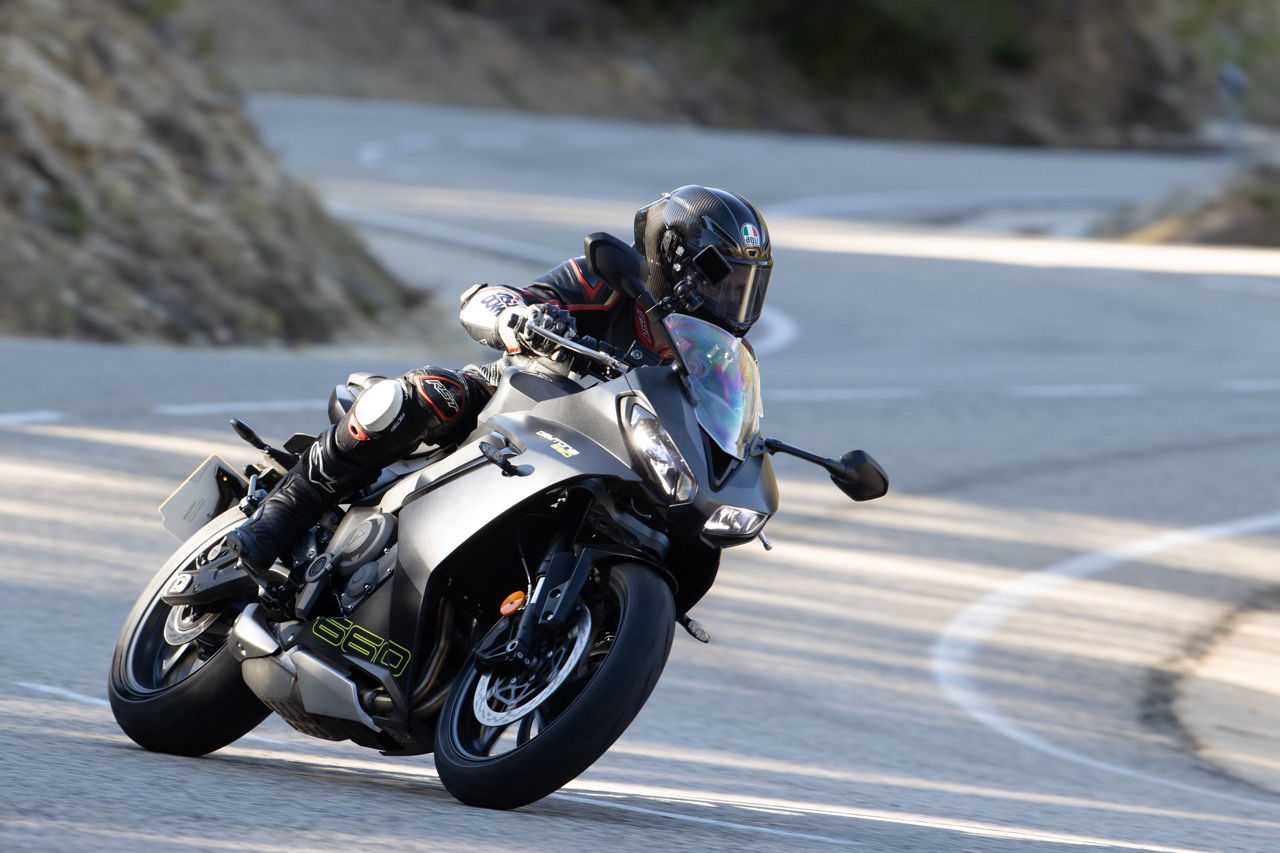2023 Harley-Davidson CVO Street Glide review: £38k tourer ridden
With a new engine, new bodywork, and more technology than ever before, the heavily updated Harley-Davidson CVO Street Glide marks the most significant update to the model in nearly a decade.

If you are looking for a big slice of heavyweight Americana, the Harley-Davidson CVO models are likely to be bikes at the top of your hit list. They offer the biggest, highest-spec, and most unashamedly brash taste of Grand American Touring.
This latest version of the CVO Street Glide though has a slightly different flavour to it. Still unmistakable in its styling and design, beneath the skin though it's had a thorough going over, with Harley-Davidson’s CEO, Jochen Zeitz, calling it ‘Grand American Touring, for European Roads’.
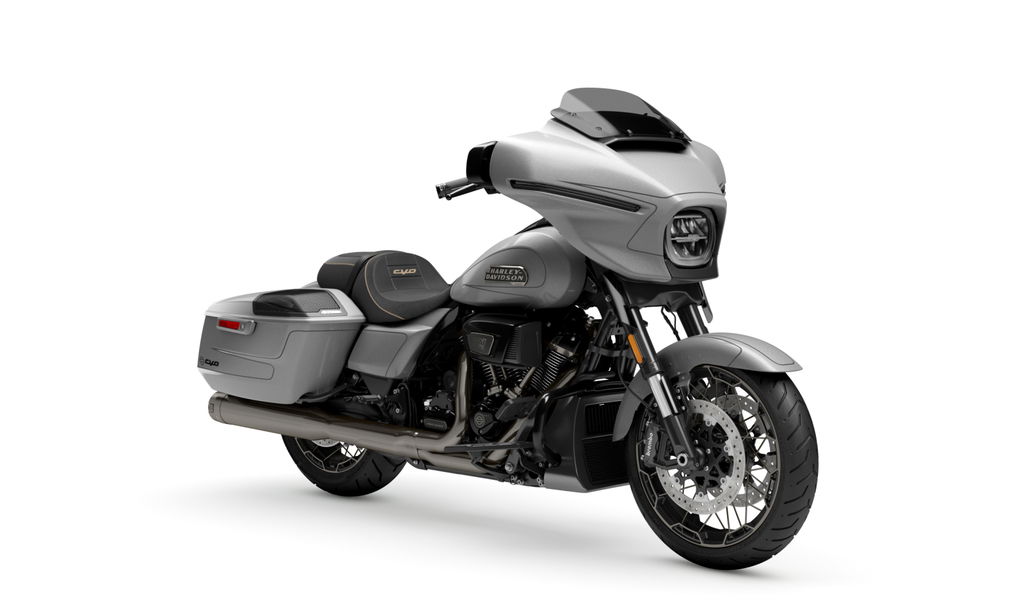
The result of this new mantra is a pretty much all-new CVO, with really only the frame and swingarm being carryover items from the previous generation bike. It’s lighter than before, with Harley claiming it to be the best handling, best performing and best looking Street Glide the company has ever built.
To get an idea of how the new bike handles, we’ve borrowed it for a two-week loan, and have some shorter trips, B-road blasts, and a long haul north planned on the new machine.
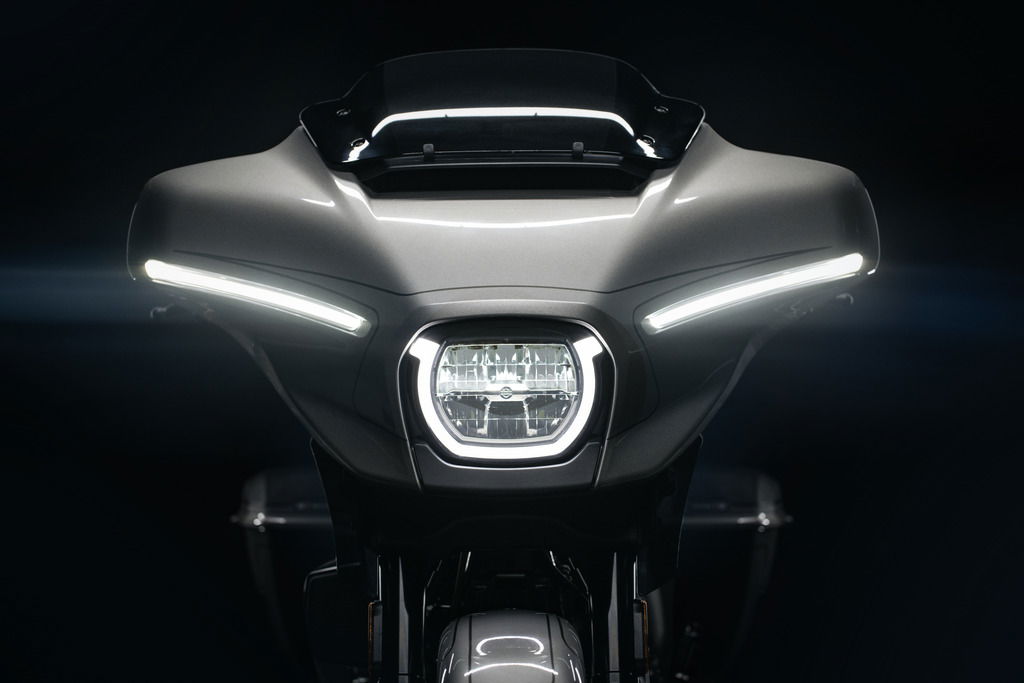
What’s new for the big CVO?
Styling is the most easily spotted change, and from the batwing fairing to the panniers, every single panel and surface of the new bike has been chiselled and tweaked, resulting in a much more muscular and modern-looking bike. The engine is a huge news story for Harley-Davidson, and while it isn’t the first H-D bike to gain it - both the Pan America 1250 and Sportster S have VVT - it is the first time an air/oil-cooled ‘traditional’ V-twin from the American brand has featured Variable Valve Timing. alongside the VVT system, the bike’s capacity has been boosted to 1,977cc (121 cubic inches) and all of the electronics and riding modes have been optimised for the new motor. The result is 113bhp at 5,020 rpm, and 135ft lb of torque at 3,500 rpm, plus significant improvements in economy and exhaust emissions.
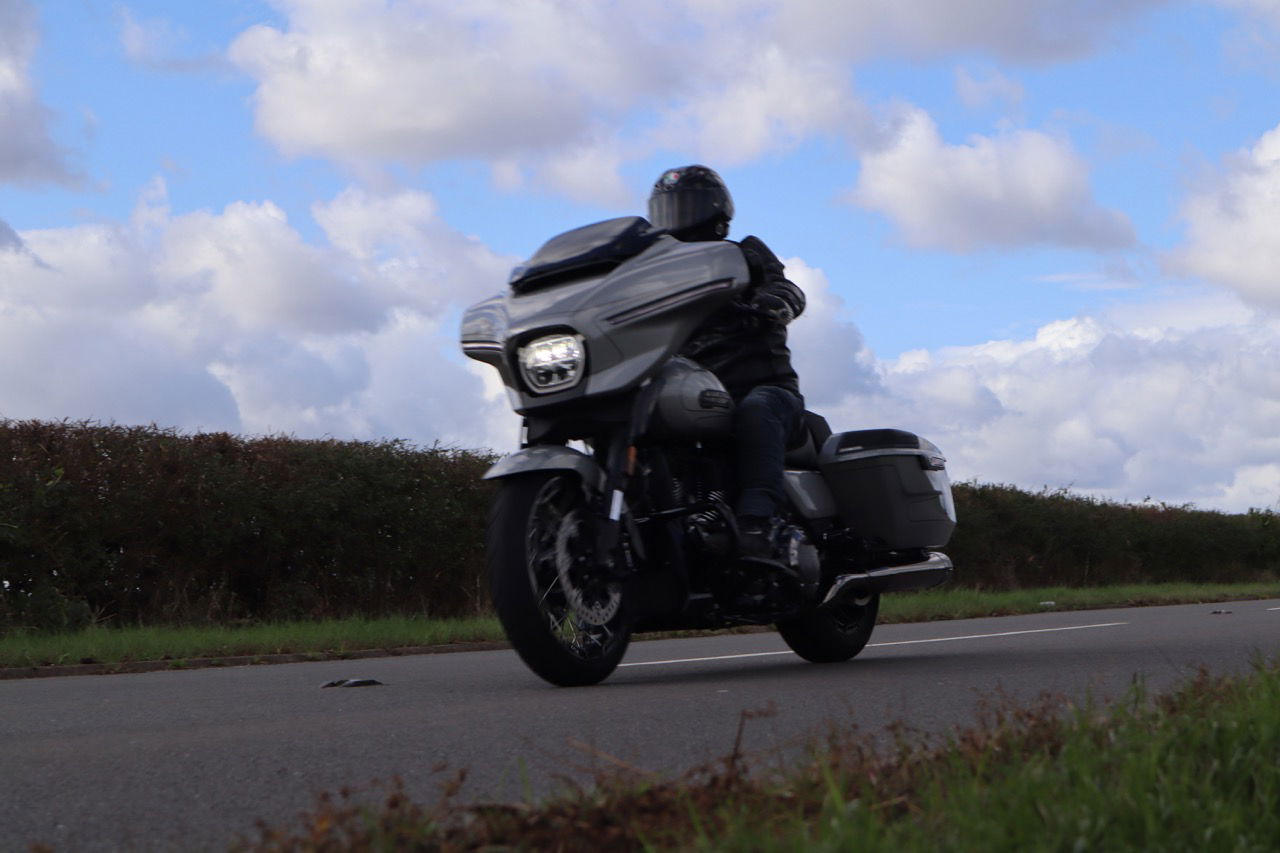
What’s it like to ride?
The very first impression you get of a bike like this is the effort needed to heave the thing off the side stand, which for somebody my size (five-foot seven-inches in my riding boots!) is always a bit of a mission. The new bike is around 13kg lighter than the outgoing CVO Street Glide, although those missing pounds don’t make themselves evident at a standstill. They do though become easier to spot once you get moving. I’m not going to try and say the new bike feels ‘light’ or ‘nimble’, because, at 380kg in running order, it’s still a big bike. But it does feel easier to ride, especially at low speed, than any of the other CVOs I’ve tested. That slow-speed handlebar wobble when you come to a halt is now eliminated, and that’s all thanks to a fairly drastic weight loss programme.
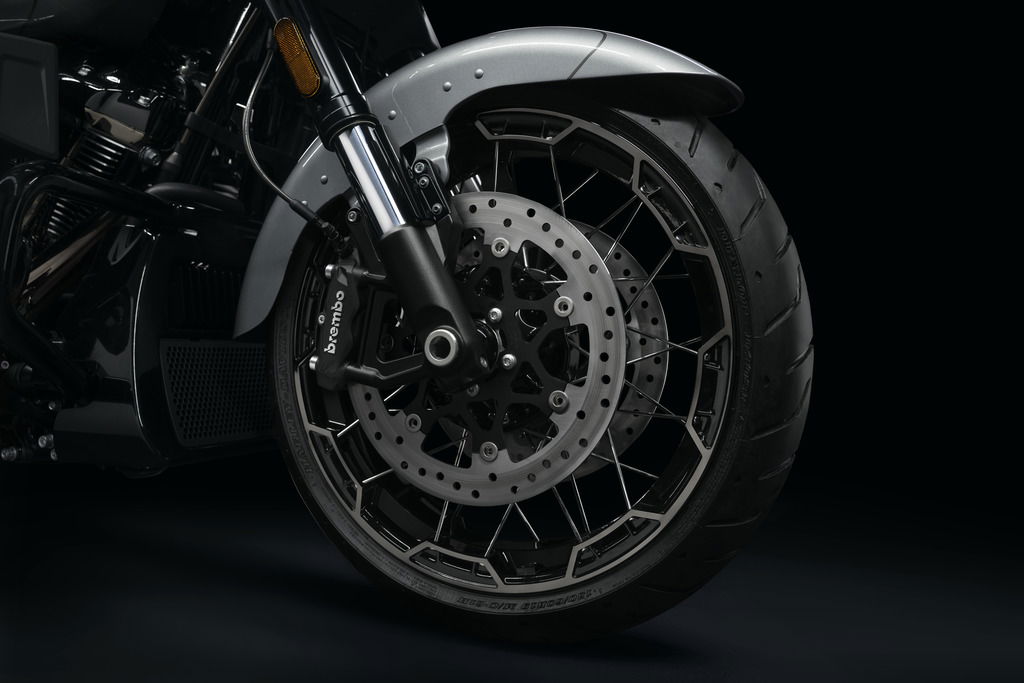
Rather than focus on just one or two elements of the bike slim down, Harley looked at the whole bike, and rather than targeting significant gains in just those areas, the engineers thought more like a race team, and aimed for smaller gains across the entire machine. The fuel tank, for instance, is formed from thinner material, and the aluminium triple clamps save over 3kg alone.
All of this helps the handling once I leave the traffic-hating town of Oxford behind and head out into the country. The new bike is running Showa 41mm upside-down forks, and while non-adjustable, they are a big upgrade for the CVO. It’s still a bike that loves tracking a line through a sweeping bend, but what’s really changed is how much more poised it feels on the brakes. Now when you haul on the four-piston Brembo stoppers, the bike doesn’t dive through its stroke and into the bump-stop, and instead, you have a much more controlled feel as the weight transitions to the front end and a more progressive, supportive feeling.
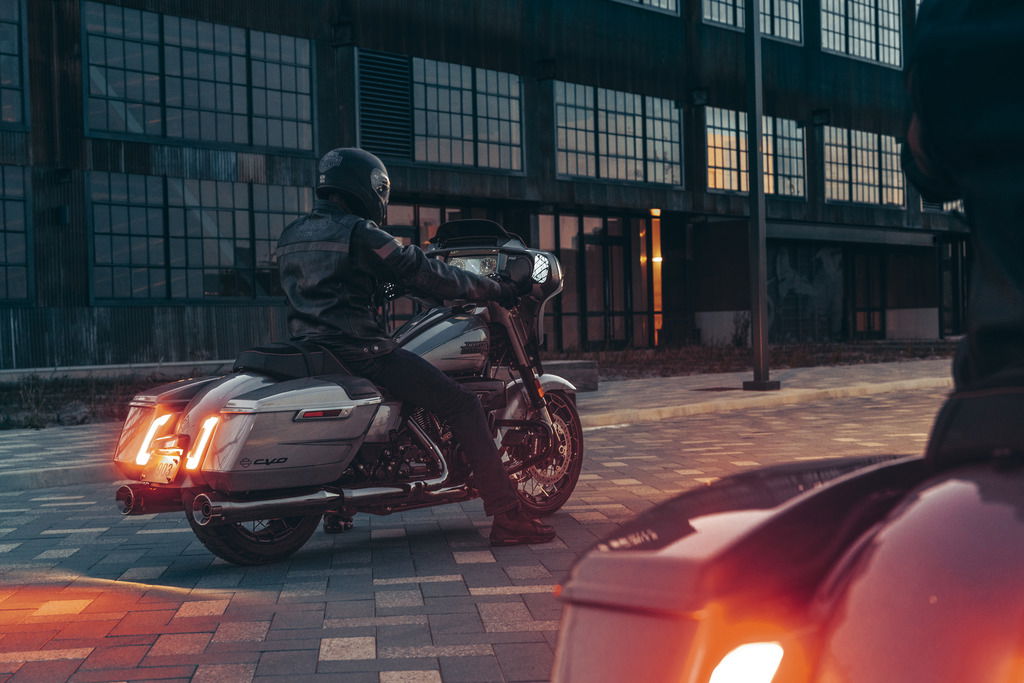
The rear end has also gained some new hardware, with Showa shocks that are remote pre-load and manual rebound adjustable, allowing for 50 per cent more travel than the old bike. The result is a much plusher, less jarring ride and a more composed feeling. Paired with the new higher-spec front forks, the bike has a new-found immunity to mid-corner bumps, lumps, and pot-holes. Comparing this to how the previous bike handled it's a seismic change and it’s no doubt something that will be appreciated by your pillion as much as you.

Is the new Milwaukee Eight 121 VVT engine any good?
If you are coming to the CVO from the silky smooth world of inline fours and triples, you’ll probably need a bit of time adjusting to the way a big-bore engine delivers its power. They are a completely different proposition, and even moving to the CVO after riding my long-term Tiger 1200 GT Pro, the first couple of miles of riding see me slamming unceremoniously into the rev-limiter constantly.
It doesn’t take long though to recalibrate to the push-rod V-twin, and once you do, there’s a lot to like. 135lb ft of torque is the headline figure, but it’s only a small part of the story. The new engine produces around 8 per cent more torque than the 117 engine, but with the VVT system now optimising the lift and duration of both the intake and exhaust, the mid-range torque is now richer and spread further through the rev range.
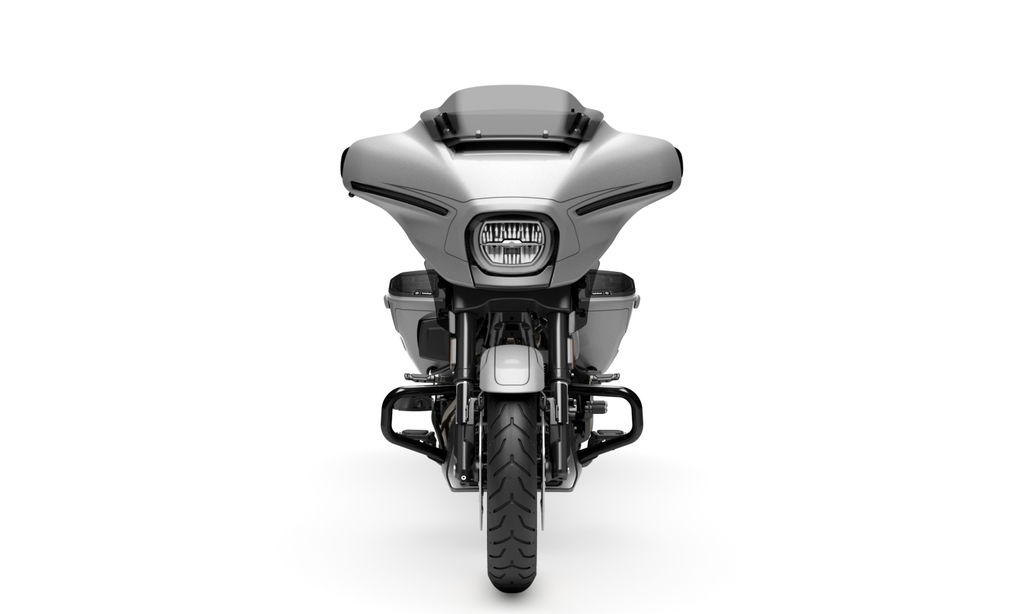
The result is more consistent torque, at pretty much any engine speed and in almost any gear. You can also just feel the VVT system kicking in once you venture above 3,000rpm. It’s not a huge shove in the back that you notice, but you can definitely feel the engine roll up its sleeves and get ready for work as you open the throttle.
More helpful updates have been added to the cooling system of the CVO, with a revised circuit that works on the hotter rear cylinder first, before transferring the coolant to the front cylinder. As the weight saving I mentioned above, it’s lots of little changes, but the result is a cleaner burning engine and a noticeably more comfortable ride on a hot summer’s day.
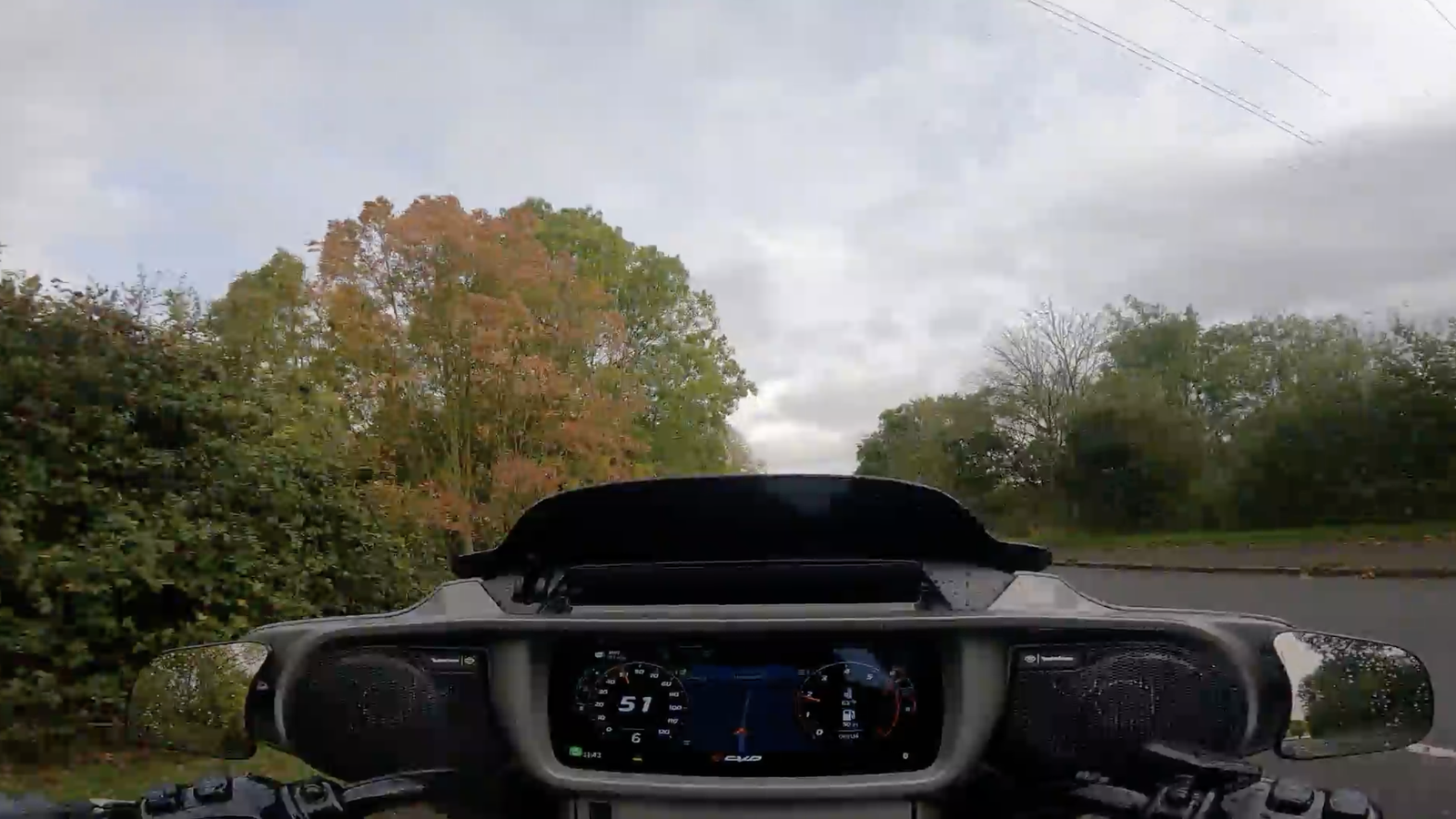
There is also something to be said about what Harley has done to retain the character of its biggest production-based V-twin. There will be some purists out there who are perhaps worried that the new VVT system will kill some of the traits that owners come to love, the off-throttle burble and lumpy tickover, for instance. That’s not the case, and had the engine not featured the letters ‘VVT’ emblazoned on the timing cover, you’d really have no idea that this wasn’t just a new, larger-capacity version of the 117.
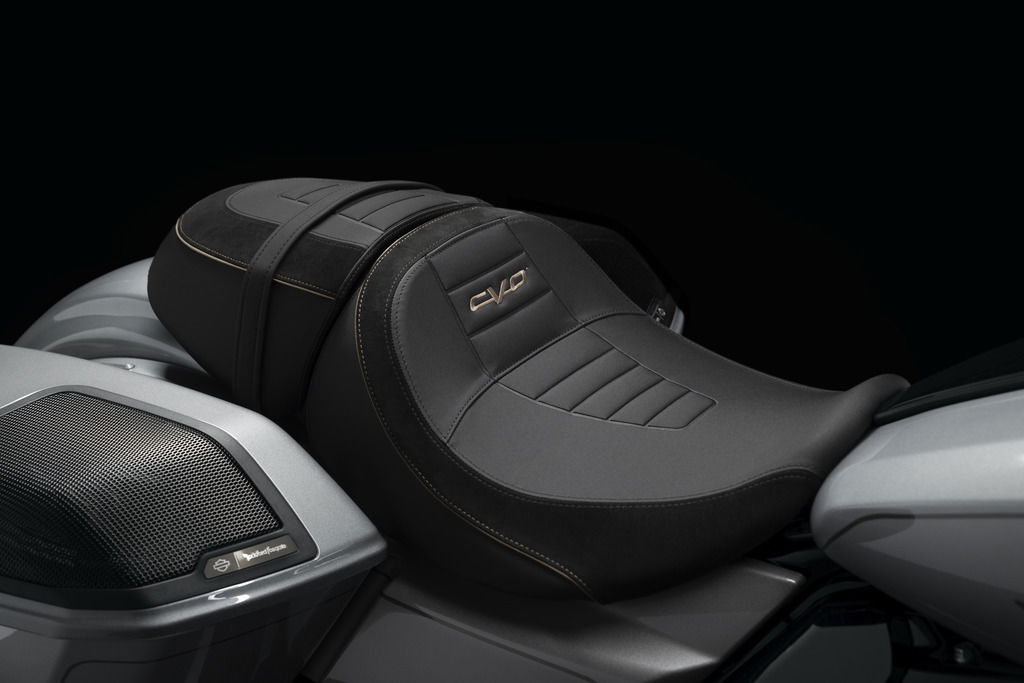
What’s the long-distance comfort like?
After a week of blatting around the west midlands and enjoying the last of the sunshine, I took the launch event of the new Livewire S2 Del Mar as a chance to check out how the CVO performed on a slightly longer motorway schlep. It’s not a million miles, but longer enough to get a feel for the bike, and with torrential rain for the journey up there, a good chance to get to grips with the new fairing.
Like any of the big Harley tourers, the riding position of the CVO is about as relaxed as riding a motorcycle gets. Your feet and arms are both out front, although even when I’m aboard I’m not overly stretched, and it’s only tight U-turns that I have my arms at full extension. The seat, which on the CVO models is finished in Alcantara, is also extremely comfortable, with a heavily contoured design that seems to hug you into the bike as you settle in for a cruise. With thickly damped running boards, handlebar grips and the expansive seat beneath you, there really isn’t any vibration to speak of, and cruising at 75mph will see the motor hovering between two and three thousand rpm in top gear.
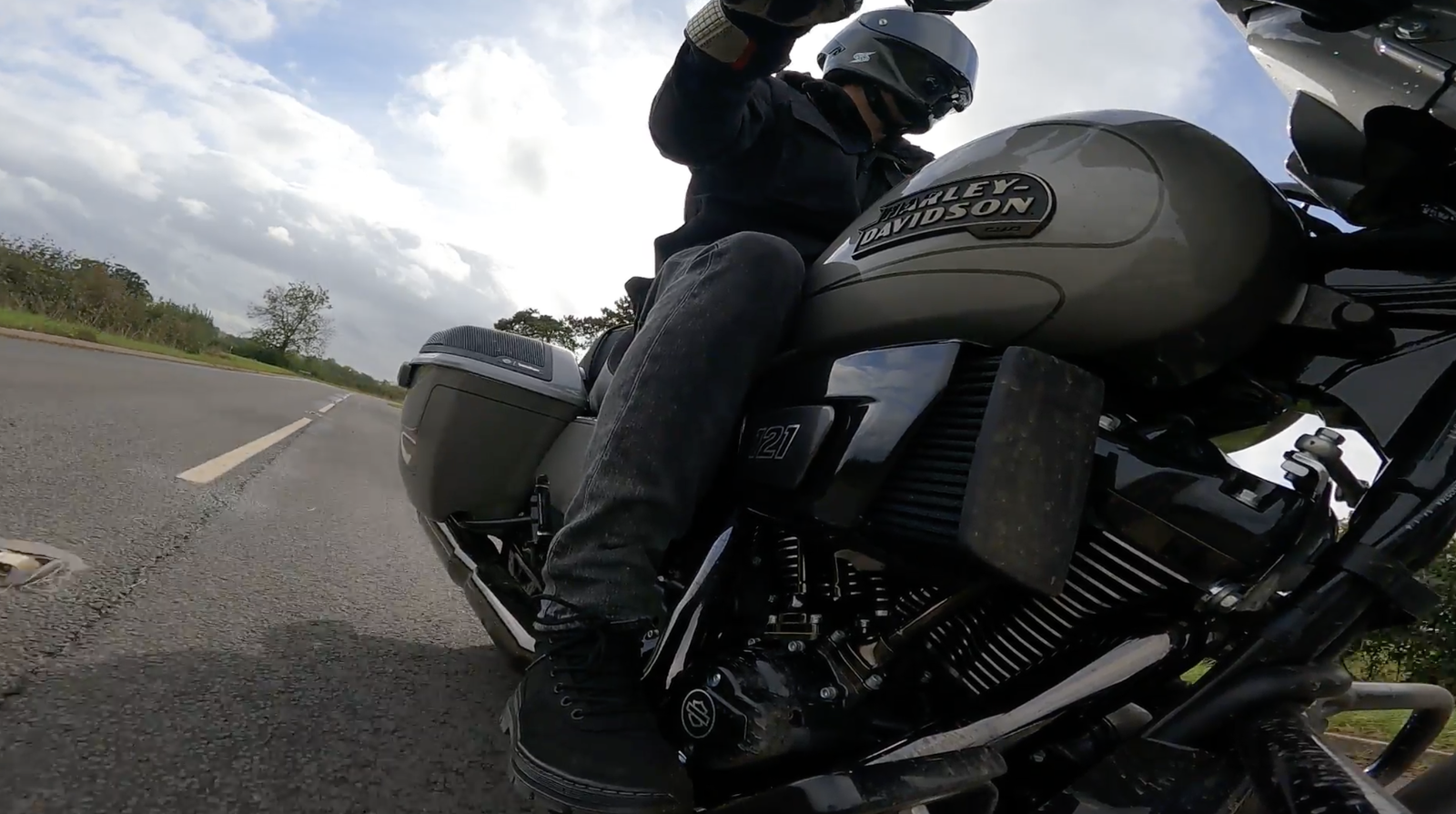
The new ‘batwing’ fairing has seen a significant overhaul, with H-D leaning on Computation Fluid Dynamics (CFD) to help hone its design. It’s visually more modern and muscular, and after spending two hours cowering behind it in torrential rain I can confirm that does a very good job of keeping the worst of the weather at bay. Beneath the new fairing are movable deflectors that can either direct cool air towards your legs or, as is the case here, divert the rain and cold away. And they do work, as I could feel my textiles flapping about much less once I’d adjusted the angle of them.
If there was one thing I was longing for on the ride it was a slightly taller screen. I’m the wrong shape for all of these bikes, and that leads to my forehead ending up right where the designers didn’t envision. Luckily there are optional taller screens available and that might be something to look at with your dealer if you are thinking of buying one.
As is the case with Harley’s CVO models, the top-spec Street Glide comes ready-equipped with heated grips, which you can either turn on by scrolling through the menus on the TFT or, the more simple route, clicking the button mounted on the outside of the left handlebar.
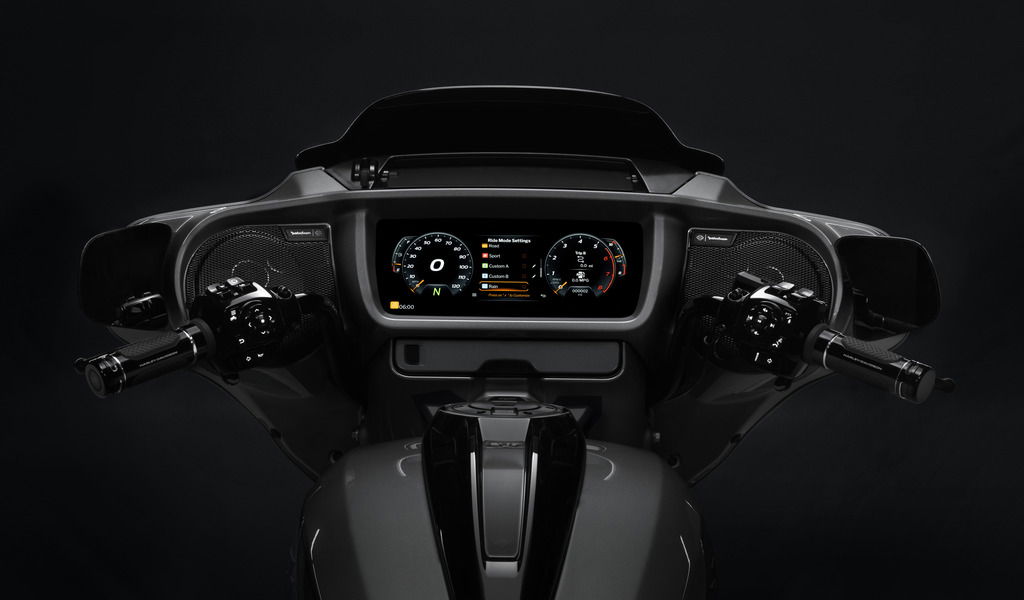
Technology and electronics
Right, there’s a lot to take in here so buckle up. The most notable element of tech is the humungous TFT dash that takes up most of the instrument binnacle and replaces most of the traditional dials. It’s a beautiful thing to look at, and as with all the Harley TFTs, you can tweak and fettle the layout of the information so you have what you want, right where you want it.
Within that TFT you get full-screen mapping that can either be used standalone, which I like a lot, or linked to your phone and through the H-D app. All the mapping is super easy to use, and should you link it to your phone you’ll even get traffic updates and it’ll work out a clearer route for you on the fly.

Dig down into the dash and you have a plethora of options to choose from, including riding modes, traction control and the pièce de résistance, the awesome Rockford Fosgate Stage II audio system. It has 500 watts total output and four speakers, two in the batwing and one in each of the pannier lids, and as you’d expect it’s extremely loud, but also, the sound quality is great.
The switchgear of the bike is all fairly straightforward and as you’d hope for a bike that is a shade over £38,000, it all has a nice quality feel to it.
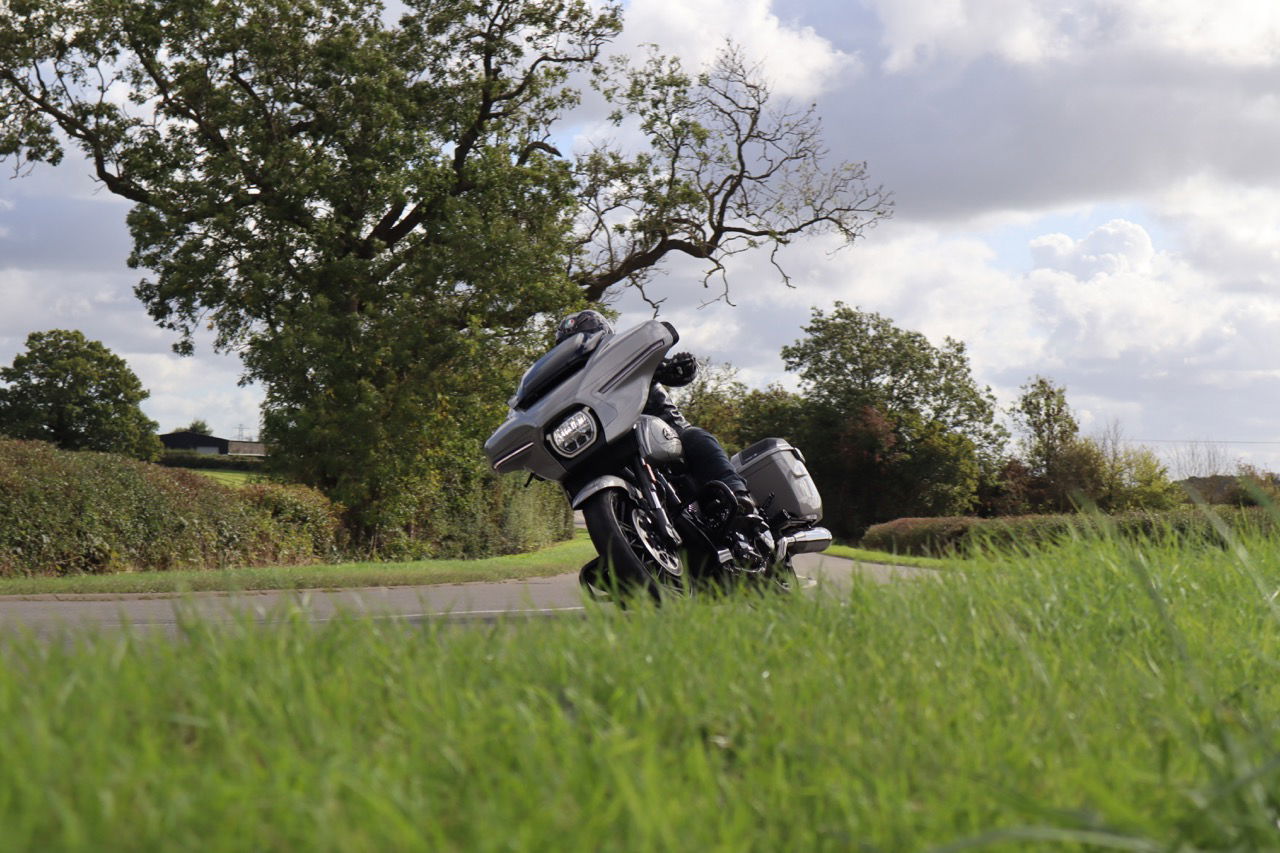
2023 Harley-Davidson CVO Street Glide verdict
The CVO models from Harley rightly stand proud at the top of the brand’s model range. They represent the biggest, best, and most flashy bikes you can buy with a bar and shield badge on the tank. For years now that extra dough has bought you more tech, better paint and some exclusivity, although, for the most part, the handling and performance of the CVOs wasn’t really very different from the other big-bore tourers in the range. This bike, and its 2023 CVO Road Glide sibling change all that, and now for your money, you are getting a bike that is dynamically better than anything else that has come before it.
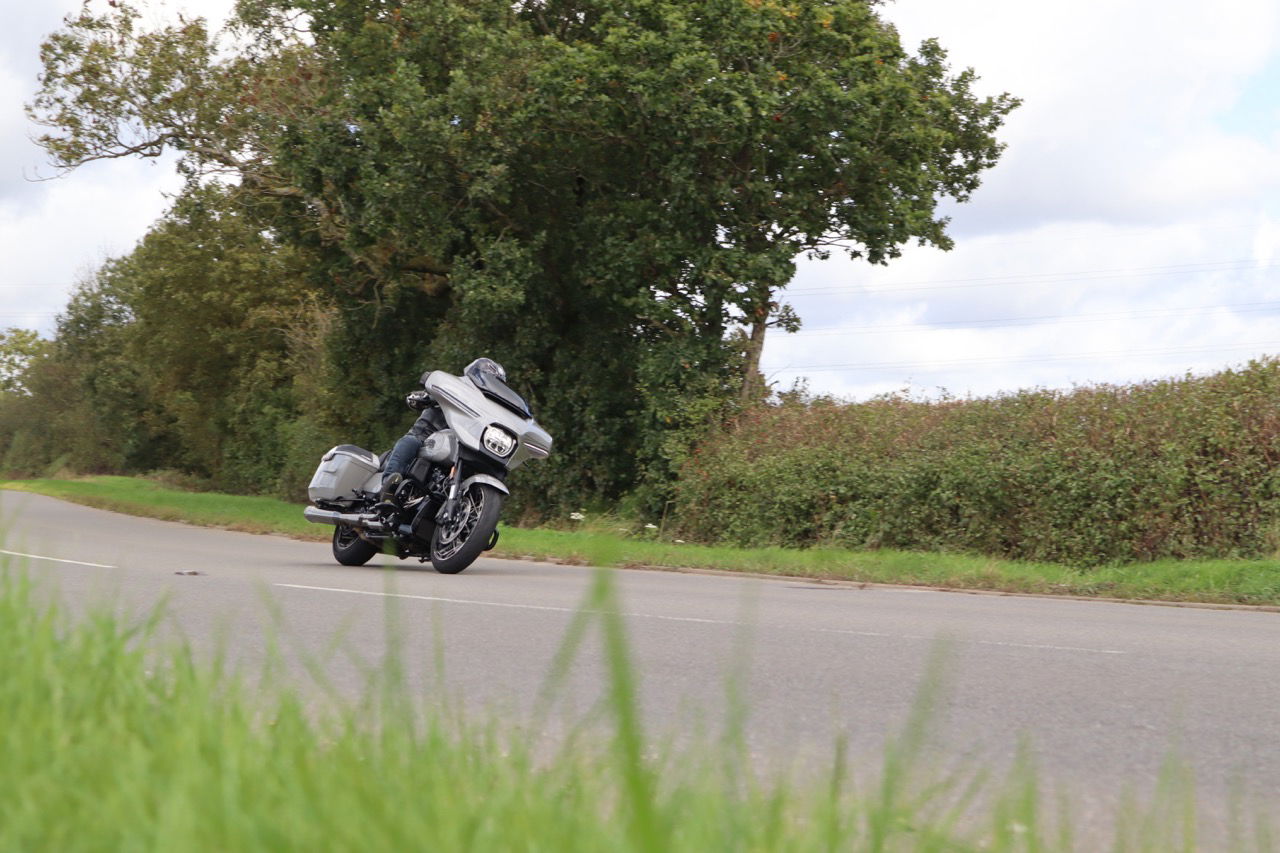
You also get something no other Harley owner can get, unless they join the CVO club, that 121ci VVT engine. It’s a huge deal for Harley to roll out the technology on one of its air/oil-cooled pushrod V-twins, but I think they’ve done a decent job of implementing it without trampling over the character of the bike that has won so many fans over the years.
We can’t though talk about the CVO without talking about the price. In base trim and as ridden it’ll set you back £38,295, and if you want the fruity Whisky Neat paint job (which you do) it’ll add another £6,400 to the price. That’s a lot of cash, but this is a lot of bike, a once-in-a-lifetime bike, if you will. If you’ve had your heart set on one of these for a number of years, I’m sure the amount you are paying will pale in comparison to how it’ll make you feel when you take it out for a ride.
Harley CVO Street Glide video review
